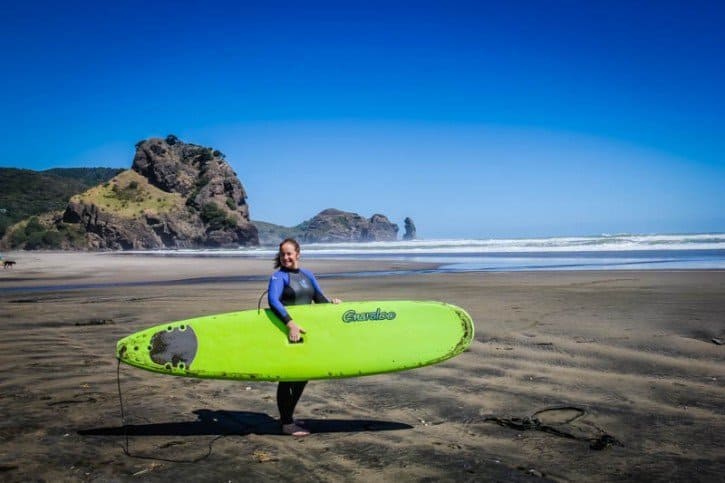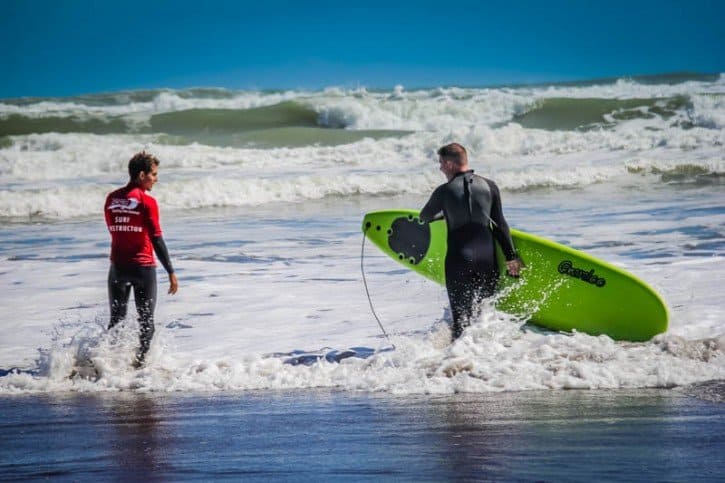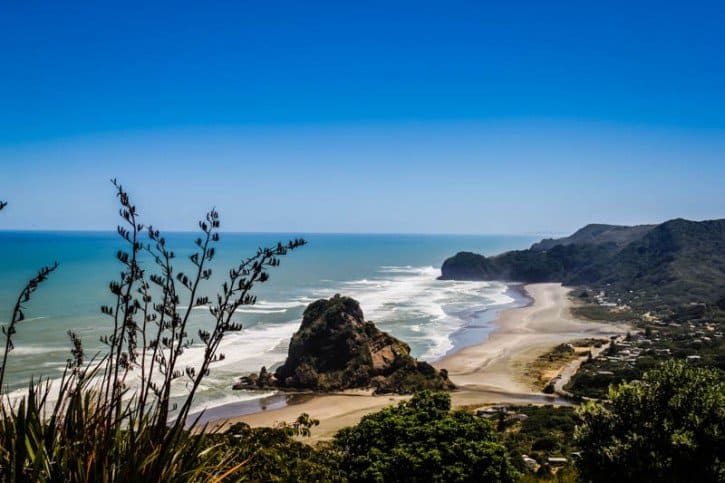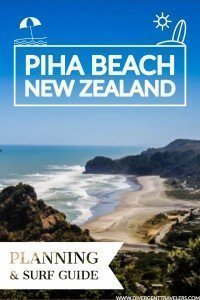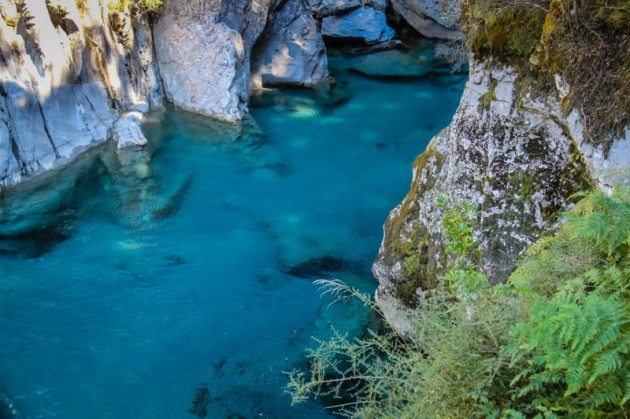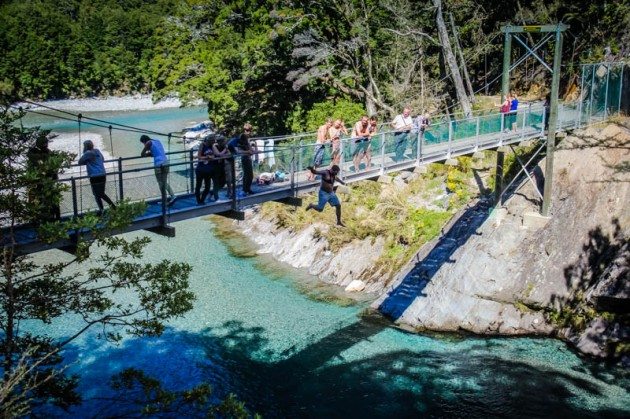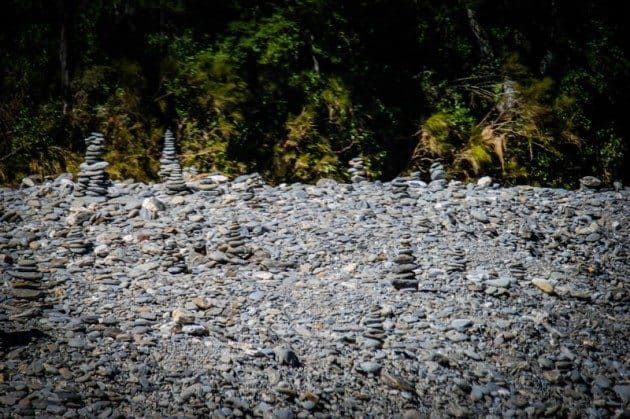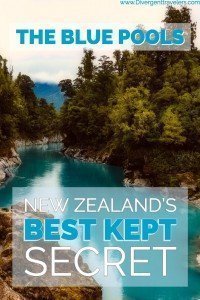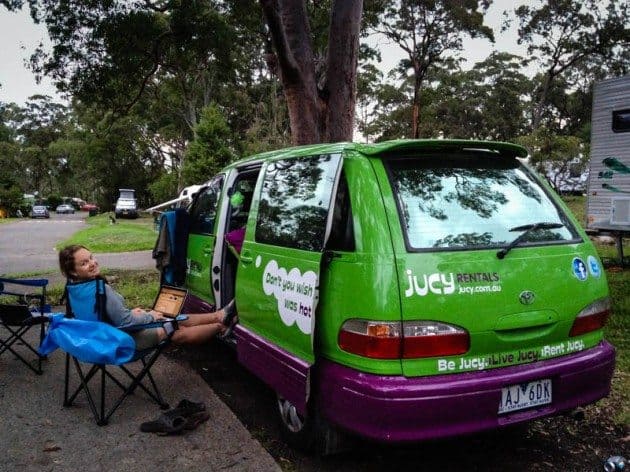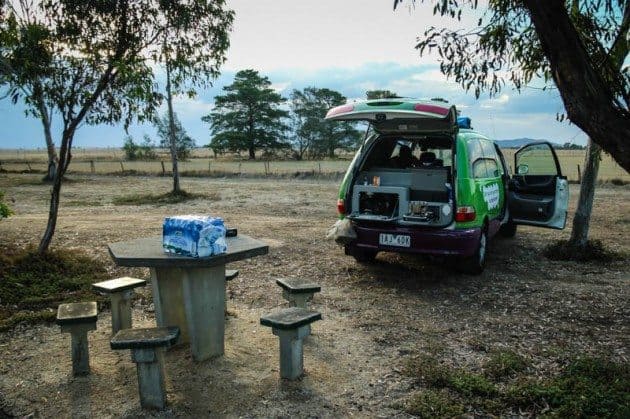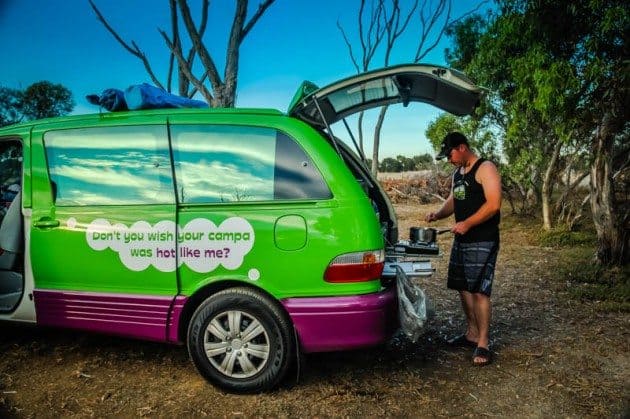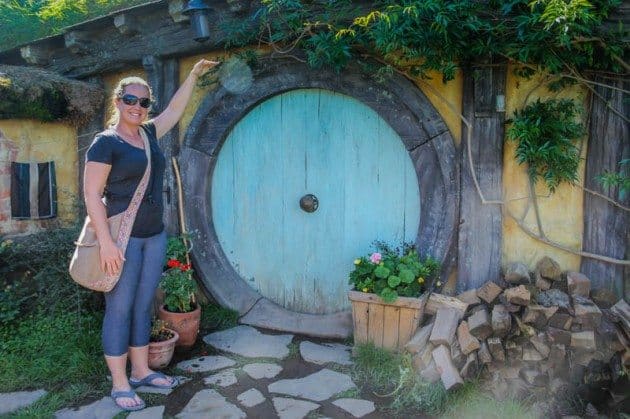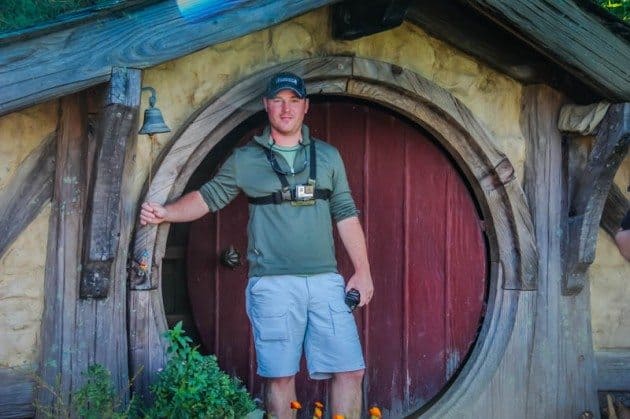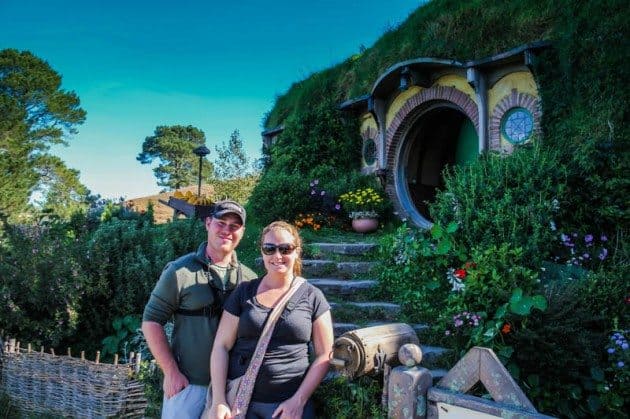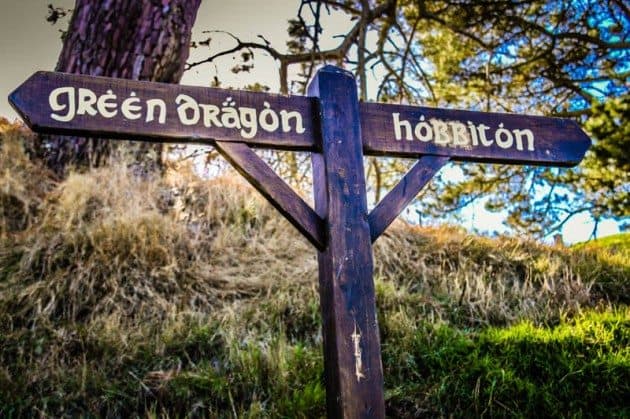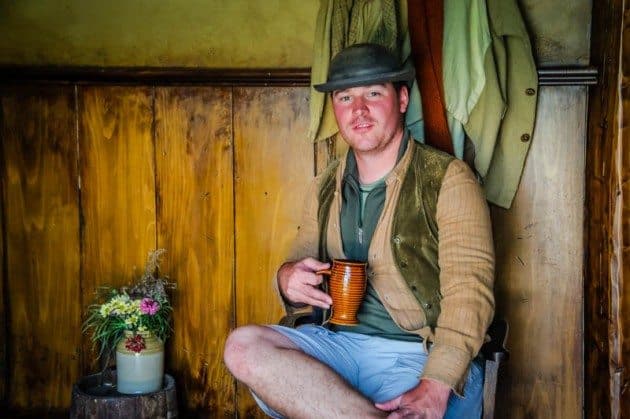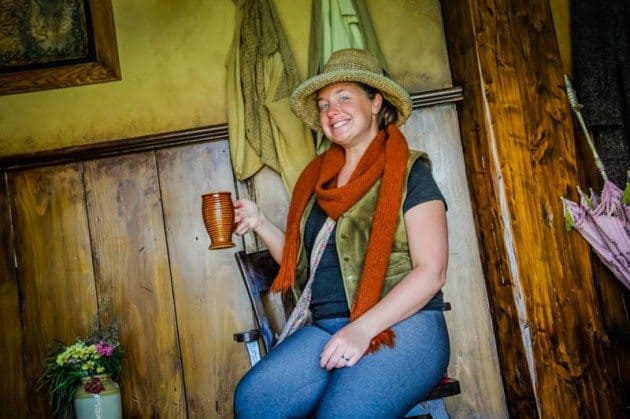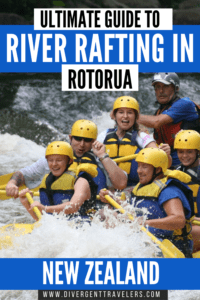Tauranga may be one of the largest cities in New Zealand, but that means little in a country as small and charming as this. Found in the north of the North Island, the city is located in the beautiful surroundings of the Bay of Plenty, and there are many great things to do in Tauranga and the surrounding area.
With quick connections to Auckland and other popular New Zealand destinations, Tauranga is quickly becoming a big travel spot.
There are spectacular beaches, pleasant coastal villages and local rural communities to explore nearby, fiery sunsets over the harbor and plenty of adventure activities in great New Zealand outdoors.
To help inspire your trip to the Bay of Plenty, here are our favorite things to do in Tauranga.
Don’t leave home without: Lonely Planet New Zealand (Country Guide)
15 Things to do in Tauranga, New Zealand
1. Mount Maunganui

Mount Maunganui comprises the most beautiful and stunning suburb of the city and it’s definitely one of the best things to do in Tauranga. Rising above the otherwise flat coastline, Mount Maunganui is only 200 meters in height, but it stands out dramatically against the skyline and has long been a local landmark.
You can hike the trail to the top, which leads from the beach at the base of the mountain to the summit. It’s not far, just a half-hour if you are in even fairly decent shape, and you’ll find waiting at the top of the best views in Tauranga. You’ll be able to see far along the coast of the Bay of Plenty and across all of the city.
Want to see little blue penguins, New Zealand fur seals, orcas, and dolphins? Book this scenic cruise around Tauranga Harbour. Departing from Mt. Maunganui, this boat trip explores the inner harbor and delivers you to Matakana Island where you’re welcome to hop off to explore the sandy beach on your own.
2. Shop the Local Markets

Tauranga might be a large city, at least in relative New Zealand terms, but it still very much retains that small-town vibe, which is one of the reasons it’s become such a popular holiday destination.
One of the best things to do in Tauranga to soak up that small-town life and to meet some of the locals is to visit one of the many markets that held here throughout the week.
There are farmers’ markets selling local produce from the countryside, including fresh fruit, preserves, and a few local delicacies. There are handicraft markets, second-hand markets and car boot sales, and more in Tauranga.
3. Mount Maunganui Beach

At the base of Mount Maunganui, you can find the beautiful, soft sands of the Mount Maunganui Beach. Consistently labeled as one of the best beaches, not just in New Zealand, but anywhere in the world, this is one of the best things to do in Tauranga.
With a long stretch of white sand, despite its popularity, you’re always likely to find a secluded spot here, just take heed of the warnings when entering the water, particularly in more isolated areas. The waves here are great for surfing, or you can just kick back on the sand in summer and enjoy the beach.
4. Tauranga Art Gallery

Soak up the local art and culture at the excellent Tauranga Art Gallery. Here you can find an intriguing mix of contemporary work from local artists, as well as historical pieces from the Bay of Plenty and wider New Zealand.
Admission is completely free, so there’s really no excuse not to at least pop in, and check out the local art scene.
5. The Strand Waterfront

The Strand is the main boulevard in the city that runs along the waterfront, and it’s the perfect place to visit if you are looking to eat out or enjoy a bit of nightlife. After walking along the sea-facing footpaths that follow the harbor here, pop into one of the many restaurants or cafes for refreshment.
Of course, this being New Zealand and with Tauranga being located firmly on the coast, you can expect to find some exceptional fish and chips along the Strand.
6. Helicopter Tours

With such spectacular scenery surrounding it, one of the best ways to really experience Tauranga is from the air. Scenic helicopter flights will whisk you up into the skies, over the city, and along the coastline, before heading out into the Bay of Plenty to soar over islands and inlets.
You might even be lucky enough to spot a few whales or a pod of dolphins in the water below while you are enjoying the helicopter flight.
Take to the sky in a helicopter and get incredible bird’s-eye view photos of Mount Maunganui and the Papamoa Hills. On this short aerial tour of the Bay of Plenty, enjoy grand views of the Tauranga and Omokoroa coastlines before heading inland to see the deep valleys and historic sites.
7. McLaren Falls Park

Head inland to visit McLaren Falls Park, one of the best things to do in the Tauranga region. Just a short drive from the city will bring you to the veritable wilderness of this nature reserve, which is set around McLaren Lake.
It’s incredibly popular – especially in summer – with holidaymakers and locals looking to fish or take to the water for a spot of kayaking. It’s a beautiful place, and there are some great short hikes into the forest, and a short walk to McLaren Falls, a fantastic waterfall.
At night time, the area is renowned for the glow worms that are found here, and you can even kayak along the water in the evenings to see them lit up.
8. The Elms
To discover a little gem of local history then head to The Elms, in central Tauranga, a place of immense local cultural importance. The Elms is a pleasant house, surrounded by green gardens, that was originally set up by missionaries.
It became an important center of cultural exchange and local Maoris would meet here with the newly arrived Europeans. Today, it continues to function in this sense, as visitors can learn about the unique Tauranga culture and heritage on guided tours through The Elms.
9. Moturiki Island

Also known as Leisure Island, Moturiki Island is located just off the coast by Mount Maunganui. The island is connected to the beach opposite by a man-made causeway, meaning you can simply stroll across as you please.
The island gets its English name from the fact that a few decades back, it was turned into a water park, complete with slides and other activities. That was since removed, but today you can enjoy nature and perhaps go looking for the blowholes at the far end.
10. The Historic Village
Take a step back in time at The Historic Village, one of the best things to do in Tauranga. Found to the south of the Strand, the village is a recreation of what the early European settlement at Tauranga would have looked like back in the 19th century.
Many replica houses and shops have been set up, offering visitors a look at what life would have been like in the early days of the city. They are all faithful reconstructions, with many buildings even being restored originals too.
As well as offering historical value, many of the buildings have been turned into unique shops, run by small business owners, and offering souvenirs in the form of local goods and crafts, unique gifts you won’t find in many other places.
11. Matakana Island

Found out in the Bay of Plenty, the long, thin Matakana Island is well worth a trip over to from the mainland. You can catch the local ferry out here for the short crossing from Tauranga, and you’ll be quickly surprised by the pleasant surroundings you find yourself in.
The island sits in the natural harbor of Tauranga, and it’s long been home for local Maori, many of whom continue to live here on small farms and in communities. You’ll find several miles of untouched beaches, rugged coastline and plenty of marine life off the shores.
12. Kaiate Falls

One of the best things to do in Tauranga is to take a trip out to Kaiate Falls. After a short car ride from the city, you’ll have to take on a short hike to the falls themselves, where you will be greeted by the sight of tumbling, crashing water hurtling down the rock face.
It’s a green paradise, and in summer, you can even take a dip in the swimming hole at the base of the waterfall to cool off.
13. Go Dolphin Watching
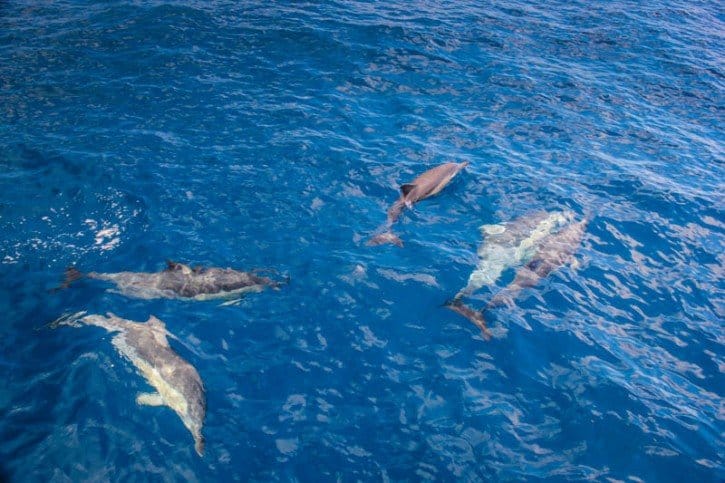
The Bay of Plenty attracts all manner of marine life, including whales and dolphins throughout the year. One of the best things to do in Tauranga is definitely to join a dolphin safari, where you can even get up close and swim amongst these amazing marine mammals.
It isn’t very often that you get an opportunity to see dolphins in the wild. The Bay of Plenty has several pods of dolphins that frequent the waters near Tauranga, so getting out on the water is an absolute must.
Occasionally you can see a whale or other sea life, such as sea lions. We were lucky to spot an albatross scanning the waters. We didn’t see any whales, but the activity of the dolphin pod we found definitely made up for it.
As well as enjoying a beautiful boat ride along the coast and through the islands, you’ll be able to jump in with a local pod of dolphins – if they make an appearance – and snorkel with these playful, intelligent animals.
Get up close to wild dolphins in their natural habitat during a 5-hour dolphin cruise from Tauranga. You can watch from the boat or interact with these playful dolphins as you swim and snorkel alongside them in the water. Listen to live informative commentary and enjoy hot drinks and muffins on board.
14. Kayaking

The Bay of Plenty and the long coastline of Tauranga is perfect for kayaking, and you can join many tours in the city or hire your own equipment and take to the waters for a spot of paddling.
Enjoy the sandy beaches from the peace and calm of the water, explore small islands and hidden inlets, and perhaps even kayak alongside dolphins or whales.
Experience the magic of New Zealand’s North Island on this evening glow-worm kayak tour in Tauranga. Begin your tour with refreshments including wine from Mills Reef Winery and delicious New Zealand cheeses on the banks of Lake McLaren. As day turns to night, hop into your kayak and paddle with your guide to the glow-worm canyon at the head of Lake McLaren. Marvel at the millions of bright green glow-worms clinging to the towering cliff sides.
15. Sunsets
Tauranga and the Bay of Plenty are particularly famed for their fiery, dramatic sunsets over the waterfront. There are some excellent spots for watching the sunset, including the famous Mount Maunganui or while enjoying a beverage along the Strand.
| Recommended Tours | ||
 |  |  |
 |  |  |
| HIGHLIGHTS OF NEW ZEALAND Auckland to Christchurch 15 days Small Group 12-16 People | NEW ZEALAND–SOUTH ISLAND ENCOMPASSED Wellington to Wellington 16 days Small Group 12-16 People | NEW ZEALAND–NORTH ISLAND ENCOMPASSED Auckland to Wellington 10 Days Small Group 12-16 People |
| Check Price | Check Price | Check Price |
More on New Zealand:
- 51 Epic Things to Do in New Zealand
- 20 Awesome Things To Do In Queenstown, New Zealand
- Complete Queenstown Accommodation Guide
- Two Week New Zealand South Island Itinerary
- 19 North Island New Zealand Photos That Inspire Travel
- 25 New Zealand Photos That Showcase the South Island
- Travel Recap- 5 Weeks in New Zealand
- The Tongariro Crossing is the Best Hike in New Zealand
- Two Week North Island New Zealand Itinerary
- Kaikoura Whale Watching: The Ultimate Guide
- 21 EPIC Things To Do In Kaikoura, New Zealand
- Karangahake Gorge: Off the Beaten Track in NZ
- Piha Beach Planning & Surf Guide
- Best Time to Visit New Zealand: Month by Month Breakdown
Did you like this story? Share it!




